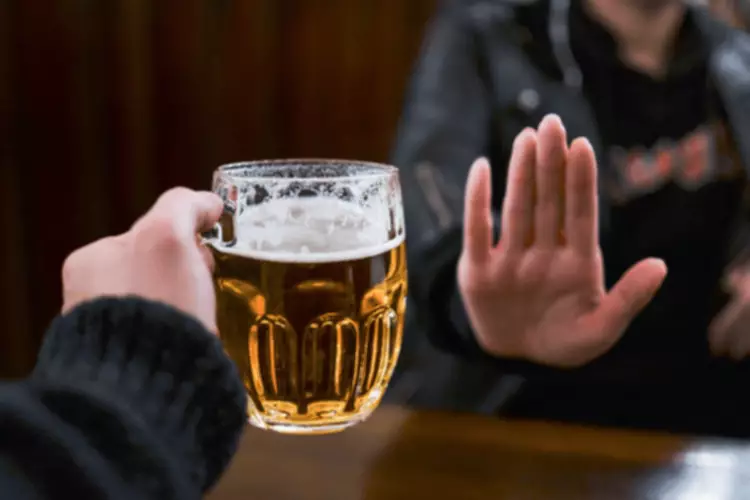
Alcohol-related liver disease actually encompasses three different liver conditions. Eating a healthy diet, getting regular exercise, and avoiding liver-damaging foods such as fried foods, can also help the liver heal during treatment. However, if the person drinks alcohol again heavily, the fatty deposits will reappear. Though rare, liver cancer can develop from the damage that occurs with cirrhosis. If your bruise doesn’t improve within two weeks, or if you start to notice frequent, unexplained bruises—whether you’re drunk or sober—call your doctor. If excessive alcohol consumption continues, inflammation levels can begin to increase in the liver.
Impaired Platelet Function
- When alcohol is not present, individuals may experience uncomfortable symptoms such as restlessness, tremors, headache, nausea, vomiting and insomnia.
- You may experience several bruises in different places on your body when you have easy bruising.
- Over time, the liver of a person who drinks heavily can become damaged and cause alcoholic liver disease.
- Instead, the amount of alcohol consumed and its impact on the body’s clotting mechanisms play a more significant role in causing bruising.
- This will assist in avoiding dehydration and allow you to thoroughly enjoy your night without any unwanted repercussions.
Since alcohol slows down central nervous system activity and communication, you take longer to register stimuli and decide what to do. It increases your chances of being hit in the forehead with an incoming football, but it may also cause you to bump into people or objects. Your judgment and decision-making skills will be affected fairly quickly when you start drinking. This is because it affects the prefrontal cortex, which is the part of the alcohol and bruising brain that controls reasoning and higher brain function. Since alcohol also lowers your inhibitions, you may be more likely to try something that you normally wouldn’t do, including potentially dangerous physical activities.

What Causes Bruises from Alcohol?

This typically occurs when something knocks against your body with enough force to break the capillaries. After the impact occurs, your body rapidly works to plug these broken capillaries and prevent any blood from leaking out. Yes, alcohol-induced bruising can be a sign of an underlying medical condition, such as liver disease, vitamin deficiencies, or blood clotting disorders. It is essential to address the root cause of the bruising to prevent further complications. Alcohol acts as a blood thinner, which means it reduces the ability Alcoholics Anonymous of blood platelets to clump together and form clots. This effect is particularly pronounced with heavy drinking but can also occur with moderate consumption over time.
What Vitamins Should I Take Men?

Yes, certain medications can interact with alcohol to increase the risk of bruising. Blood-thinning medications, such as aspirin or warfarin, when combined with alcohol, can further thin the blood and increase susceptibility to bruising. Understanding these signs helps individuals determine when it’s time to seek help regarding their drinking habits or overall health. Not everyone who consumes alcohol will experience increased bruising; individual factors come into play as well.

Staying within these limits may reduce the risk of experiencing excessive bruising compared to heavier drinking patterns. Understanding your drinking habits is vital when assessing the potential impact on bruising. Binge drinking or chronic heavy drinking poses higher risks than moderate consumption. If you develop a hematoma (a collection of blood larger than the average bruise), seek medical attention right away. The affected area will swell—you’ll get a lump or bulge like the classic goose egg on the head you see in comics and cartoons.
- Anyone can experience a minor injury or accident that causes skin discoloration.
- However, even a mild disorder can escalate and lead to serious problems, so early treatment is important.
- The liver works hard to filter toxins, break down substances, and support digestion—but heavy drinking over time can overwhelm it, leading to serious damage that often goes unnoticed.
- When you want to unlock your front door to go home after a night of drinking, you see the lock, and your brain sends a signal to your hand to move the key toward it.
Accompanying symptoms such as fatigue or weakness may indicate underlying health issues linked to alcohol use disorder. A healthcare provider will typically conduct a thorough evaluation that includes a physical examination and possibly lab tests focusing on liver function and vitamin levels. Hydration plays a crucial role in maintaining overall health, including vascular integrity. Alcohol is a diuretic; it leads to increased urine production which can result in dehydration if not balanced with adequate water intake. Dehydration thickens the blood slightly, making circulation less efficient and potentially contributing further to issues related to easy bruising.

- Chronic alcohol consumption can disrupt this process and lead to deficiencies in key clotting factors such as prothrombin and fibrinogen.
- Ever looked down at your arm or leg and wondered, “Where did that bruise come from?
- This is especially true when you consider the increased likelihood of them falling.
- This makes even minor injuries result in noticeable bruises after drinking alcohol.
If such cases befall you, step back for a moment to weigh on the more significant health issue it has brought upon your health condition. Too much alcohol intake increases the likelihood of bruising but leaves your body incapable of healing and clotting blood. Be responsible in your levels of intake, one drink a day for women, two for men. Do not binge drink as this can hurt the liver and vessels in the blood and increase all the other risks of bruising.
Conclusion – Does alcohol cause bruises?
Beyond clinical practice, he’s an advocate for community awareness and early intervention in addiction prevention. Outside work, Trent values family time, personal growth, travel, and promoting a healthy lifestyle. Cirrhosis is further categorized as compensated and decompensated. Alcoholic hepatitis occurs when the liver becomes damaged and inflamed. Symptoms include fever, jaundice (yellowing of the skin), malnourishment, swelling, and accumulation of fluid around the liver.


